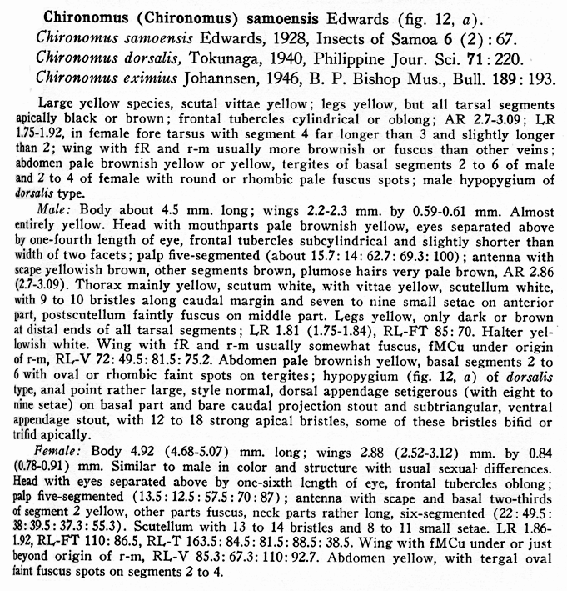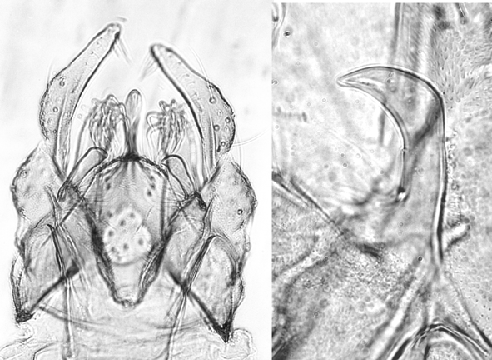Chironomus nr. samoensis sensu authors, not Edwards This seems the most reliable description of the adults of the true C. samoensis. There is currently more than one species under this name through the Oriental region. The material dealt with here is referred to as 'C. nr. samoensis.  Males
Setae on 9th tergite: 16 - 20 Important features are the LR of about 1.4 and the relatively long anterior Ta5, which is about 0.28 length of anterior Ti. Pupa: No confirmed data Larva: a small to medium sized plumosus-type larva. Anal tubules long, cylindrical, about 340 µm.) Cytology: 4 polytene chromosomes with the pseudothummi arm combination AE, BF, CD, G. Found: India - Bishnah wetland (A2,B2) Deoli Village (A2,B2); Gadigagh; Sangrampur village (A1,B1), Jammu region. Berhampore, Farakka, and Burdwan, West Bengal. Not identical to material from Japan, Korea, Java, Australia, Samoa & other Pacific Islands. Cytology differs most notably from C. samoensis by the position of the nucleolus in arm G, which is medial in C. samoensis. Some polytene chromosome sequences, are similar to those of C. flaviplumus from Japan, while the mtCOI sequences also indicate relationship. It is likely that this species is a complex of closely related forms. The included specimens have very similar mitochondrial COI sequence (result of hybridization?), but the cytology differs (as noted above). All examined larvae have a darkened gula and frontoclypeus. Indian specimens described by Chattopadhyuy et al. (1991), however, are not the same species. While the adult has many similar characteristics, the larvae differ in antennal characteristics and notably in that the head capsule has been described as brown with no mention of any darkening of areas other than the margin. It has therefore been renamed C. indiaensis by Martin (2011). |
Modified: 6 July 2025
Access: Unrestricted
Copyright © 2009-2025, Jon Martin.